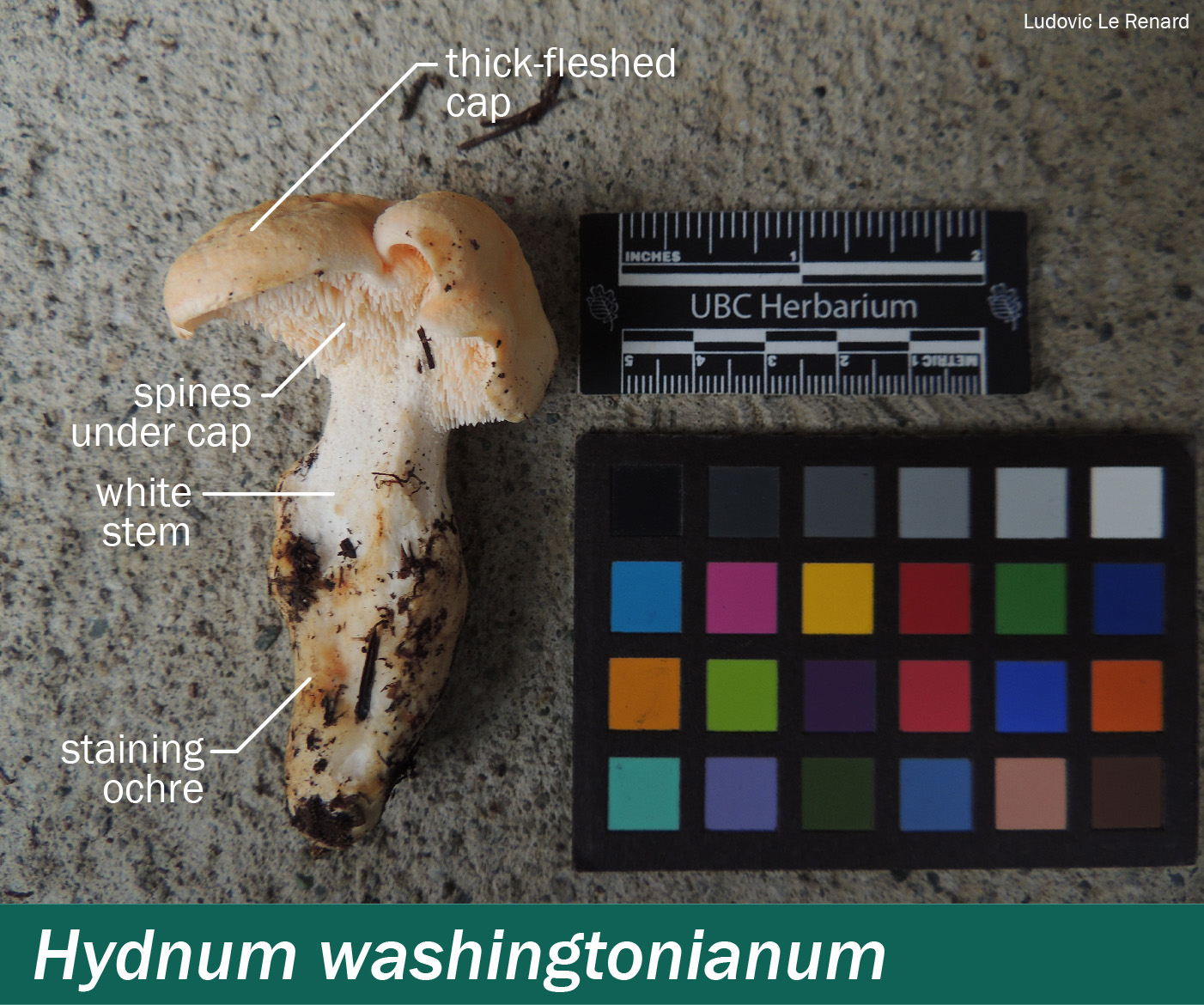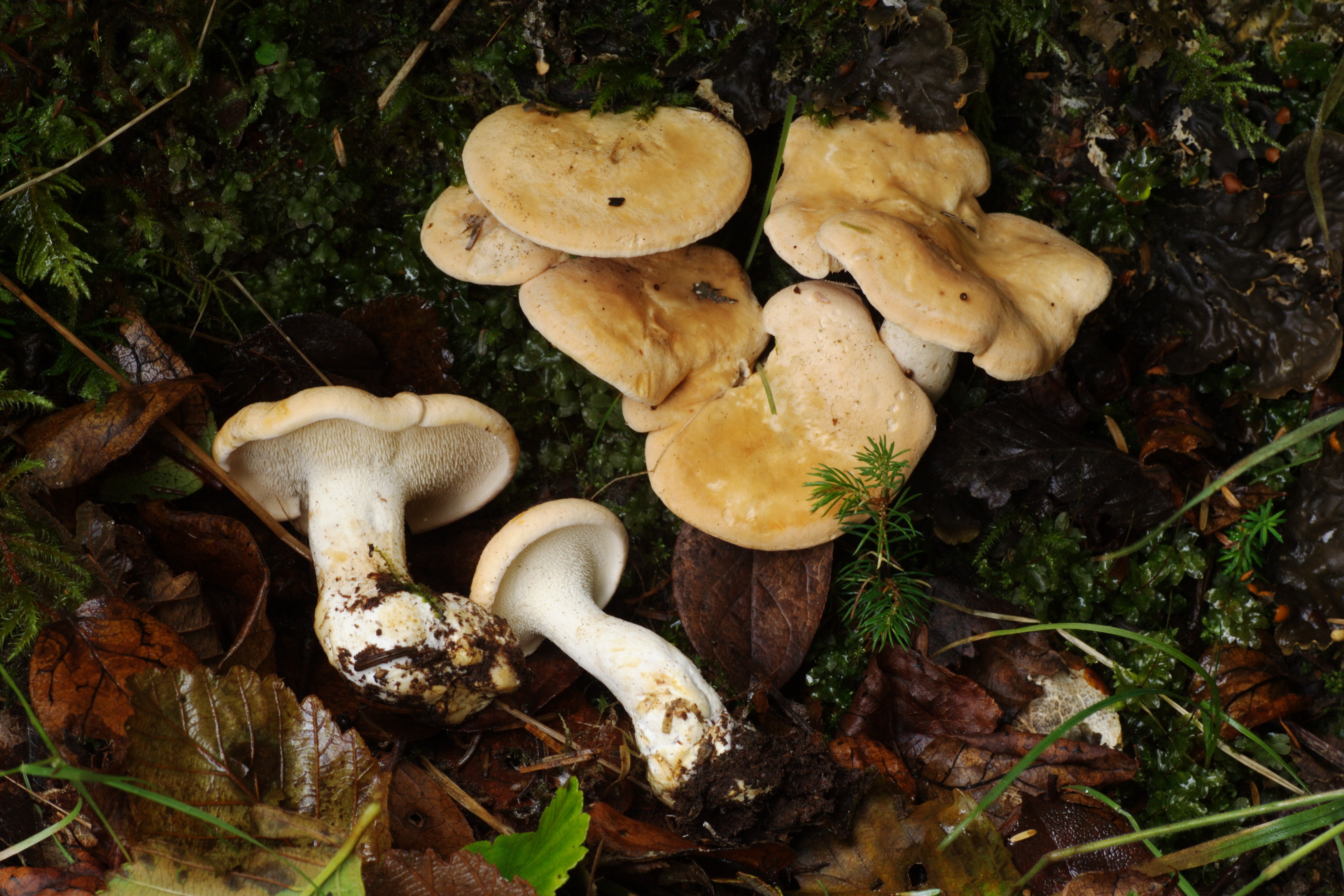Hydnum washingtonianum — American hedgehog mushroom
Odour: Fruity to indistinct. When raw (nibble, taste, spit out) a bit acrid or bitter.
Cap: 3–15 cm in diameter. The cap shape is initially rounded and sometimes creased or irregularly crumpled, flattening with age. The margin is rolled inwards towards the stem. The surface is a pale pinkish-orange cream colour, staining ochre when damaged. The matt surface is characteristic. The flesh is thick and white, a bit brittle in the cap. White-capped specimens occasionally occur as well.
Spines: Densely set on the underside of the cap and the upper part of the stem. They are up to 1 cm long, cream to pale apricot-coloured, and they break off easily.
Stem: 2–10 cm long x 1 –4 cm wide, often widest just above the base. White, but staining ochre when damaged. The stem is solid, and firm.
Ring or veil: None.
Cup: None.
Spores: 8–9 x 6–7 µm, smooth.
Habitat: On the ground in Sitka spruce (Picea sitchensis) and mixed conifer forests; ectomycorrhizal.
Geographic distribution: Hydnum washingtonianum, the American hedgehog, is known only from North America5,6. Earlier, the American hedgehog has been lumped with European and Asian species in "Hydnum repandum". Additional endemic Pacific northwest and BC species remain to be described.
The bellybutton hedgehog mushroom (Hydnum umbilicatum) is a related, smaller species with a deep depression in the centre of its cap. Its relatively long spines are attached only on the underside of the cap and not at the top of the stem.
All hedgehog mushrooms are prized as good edibles and commercially sold. Hydnum is closely related to chanterelles (Cantharellus). Hydnum repandum as seen from the top, resembles a chanterelle.
Poison Control:
British Columbia: 604-682-5050 or 1-800-567-8911.
United States (WA, OR, ID): 1-800-222-1222.


